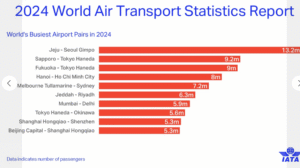Japanese secret to a longer and happier life

By Ken Mogi —-
In Japan, the secret to living a longer, happier and more fulfilled life can be summed up in one word: Ikigai.
In Japanese, iki means “to live” and gai means “reason” — in other words, your reason to live. This ideology dates to the Heian period (A.D. 794 to 1185), but only in the past decade has it gained attention from millions of people — including researchers — from around the world.
The ikigai way of life is especially prominent Okinawa, in a group of islands south of mainland Japan. (It has also been nicknamed as the “Land of Immortals” because it has among the longest lifespans and highest rates of centenarians in the world.)
‘The reason for which you wake up in the morning’
In a 2009 TED talk called “How to Live to Be 100+,” award-winning journalist Dan Buettner explores the lifestyle traits of five places in the world where people live the longest. Of all these “blue zones,” as Buettner defines them, Okinawans have the highest life expectancy. (The video has since been viewed more than four million times.)
“In America, we divide our adult lives into two categories: Our work life and our retirement life,” he says. “In Okinawa, there isn’t even a word for retirement. Instead there’s simply ‘ikigai,’ which essentially means ‘the reason for which you wake up in the morning.'”
Buettner cites the ikigai of several Okinawans: For a 101-year-old fisherman, it was catching fish for his family three times a week; for a 102-year-old woman, it was holding her tiny great-great-great-granddaughter (which she said was “like leaping into heaven”); for a 102-year-old karate master, it was teaching martial arts.
Woven together, these simple life values give clues as to what constitutes the very essence of ikigai: A sense of purpose, meaning and motivation in life.
The health benefits of ikigai
For years, researchers have tried to find the reasons to a long and healthy life. While the answer is likely a mix of good genes, diet and exercise, studies have suggested that finding meaning in life is a key component.
In a 2008 study from Tohoku University, researchers analyzed data from more than 50,000 participants (ages 40 to 79) and found that those who reported having ikigai in their lives had reduced risks of cardiovascular diseases and lower mortality rates. Put another way, 95% of respondents who had ikigai were still alive seven years after the initial survey compared to the 83% who didn’t.
It’s impossible to tell whether ikigai guarantees longevity in life through this single study, but the findings suggest that having a sense of purpose can encourage you to build a happy and active life.
Finding your inner ikigai
There’s no single way to find your ikigai, but you can start by asking a few simple questions: What makes you happy? What are you good at? What (and who) do you value? What motivates you to get up in the morning?
Finding your ikigai will take time. The secret, I often tell people, is to learn the five core pillars of ikigai (which I discuss in my book, “Awakening Your Ikigai”). By applying these pillars to your life, you can allow your inner ikigai to flourish.
1. Starting small
Starting small and executing every step with care is the very ethos of this pillar — and it applies to everything you do in life. Artisanal farmers, for example, devote all their time and effort into creating the best and tastiest produce.
They get the soil right. They prune and water their produce with care. They sense of starting small propels them to go incredible lengths.
2. Releasing yourself
When you release yourself, you’re able to let go of your obsessions and see things that matter to you in a more clear and positive light.
Practicing self-acceptance is vital to this pillar — and yet, it’s also one of the most difficult tasks we face in our lives. But if you can overcome this obstacle and be happy with who you are, it can be an incredibly rewarding experience.
3. Harmony and sustainability
You can’t achieve your most important goals if you’re constantly in conflict with the people around you. Having a sense of community gives you the support and motivation to live the life you want.
4. The joy of small things
Finding joy in the small things — the morning air, a cup of coffee or the ray of sunshine — should be part of what motivates you to get up each morning.
In high school, I would take the same 6:20 a.m. train to class every day. The sight the same familiar faces enjoying a game of shogi (Japanese chess) brought me immense joy.
5. Being in the here and now
This fifth pillar is perhaps the most profound. To be in the here and now, it’s important to focus on the present and practice mindfulness every day.
Many sumo wrestlers testify that being in the here and now is absolutely necessary in preparing for and fighting in a bout. They claim that immersing themselves in the present helps sustain their state of mind for optimum performance.
Image: Best fruit for weight loss
June 3 , 2019














